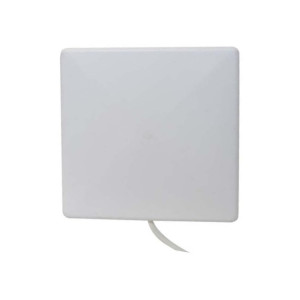Your shopping cart is empty!
MENU

There is a network for every job, and when it comes to tracking items, RFID is one of the best. Radio-frequency identification (RFID) allows network engineers to tag objects and track them at predetermined intervals. RFID secures credit cards and locks, tracks endangered species in the wild, and performs countless other tasks related to identification. If you are looking to build an RFID network for any purpose, you need the right tools for the job. A quality RFID antenna makes a world of difference and can be the reason your network succeeds instead of fails.
The entire purpose of using RFID is to tag objects in a system. It works by using electromagnetic fields to identify and track signals that are paired with objects. Considering the fundamentals of RFID networks, any system needs a minimum of three things to work: a receiver, a transmitter, and a transponder. An RFID antenna fills the transmitter role.
It is a vital component, and each RFID setup requires a suitable RFID antenna to work. Antennas provide different power levels and ranges, allowing for diverse applications with the same RFID general technology.
When comparing RFID antennas, power output matters. The antenna provides the power for the transponder. This design allows transponders to work without any auxiliary battery attachments. Instead, the radio signal carries enough energy to power the transponder and return the signal to the transceiver. For any given RFID design, antenna power is one of the most important considerations.
The Mobile Mark PN6-915 RFID panel antenna demonstrates this idea. It is designed for a 2.7-inch clearance and serves RFID communication in relatively close applications. If the tag is too far, the antenna produces too little power for the transponder to function. However, the antenna’s power output is enough to garner a return signal if the transponder is within range. All of this is achieved with 10-watt maximum power output, improving power efficiency.
Despite the low range of typical RFID setups, many devices still face harsh environments. For any outdoor application, RFID antennas have to survive extreme temperature ranges and other brutal conditions. Such environments are typical with animal tagging and tracking, outdoor storage facilities, ski pass identification, and plenty of other applications.
A rugged antenna gets the job done, just like the Mobile Mark HD7-915RCP. This variable-use antenna braves outdoor conditions. It mounts to anything, including metal, and it works fine in indoor applications when needed.
When you have a high-performance RFID antenna, your RFID network operates at its best. Considering the specific applications served by RFID designs, you need precise hardware to perform every task. That is where Westward Sales shines. Contact us today and speak with one of our experts. We will discuss your plans and assist you in finding the perfect antennas and other components to build the network as you see fit.